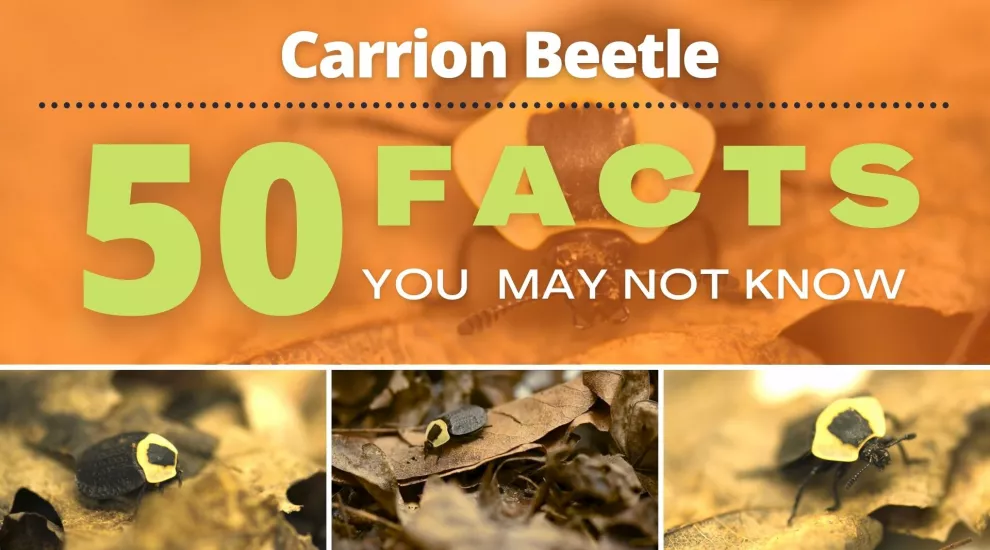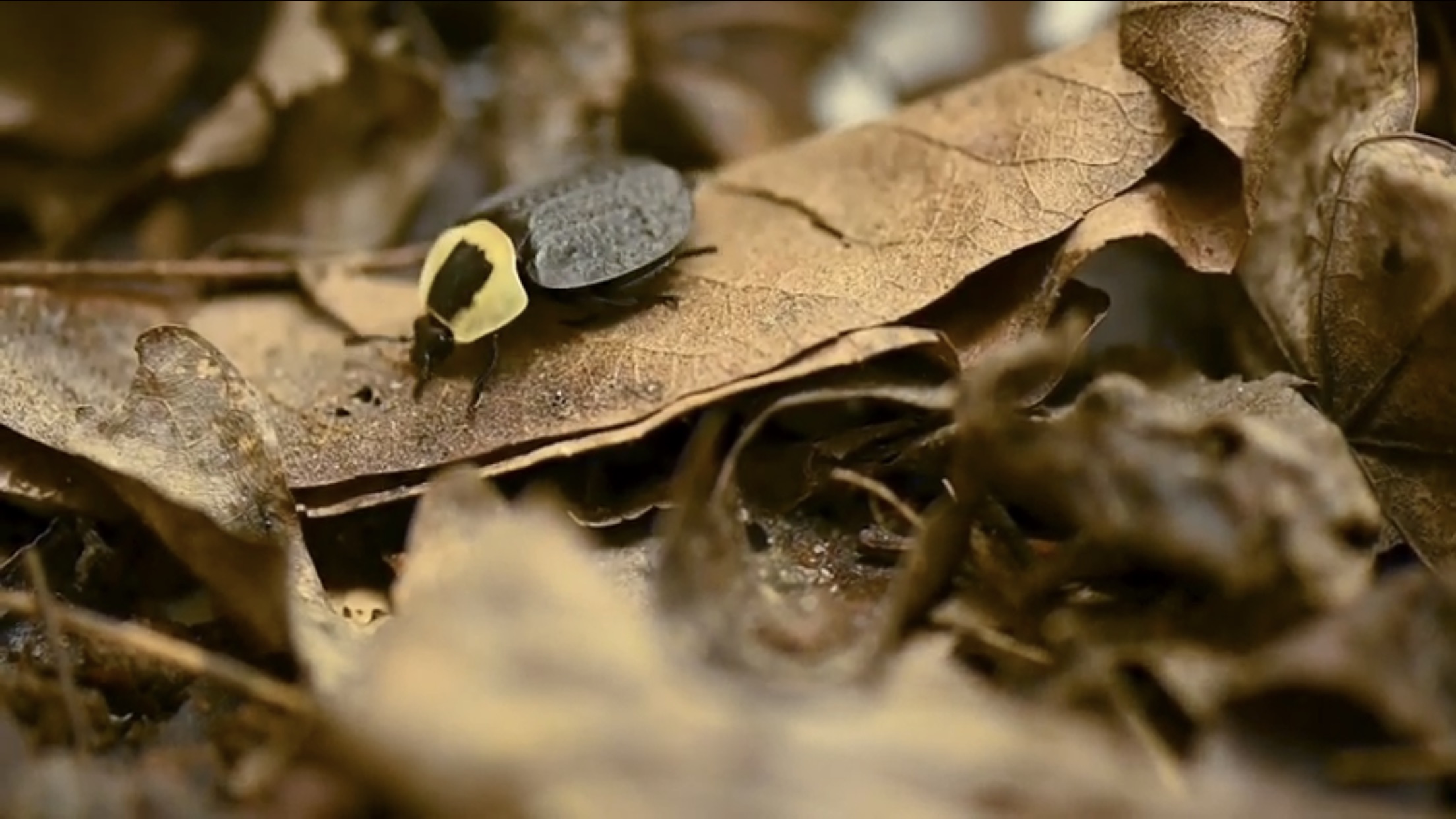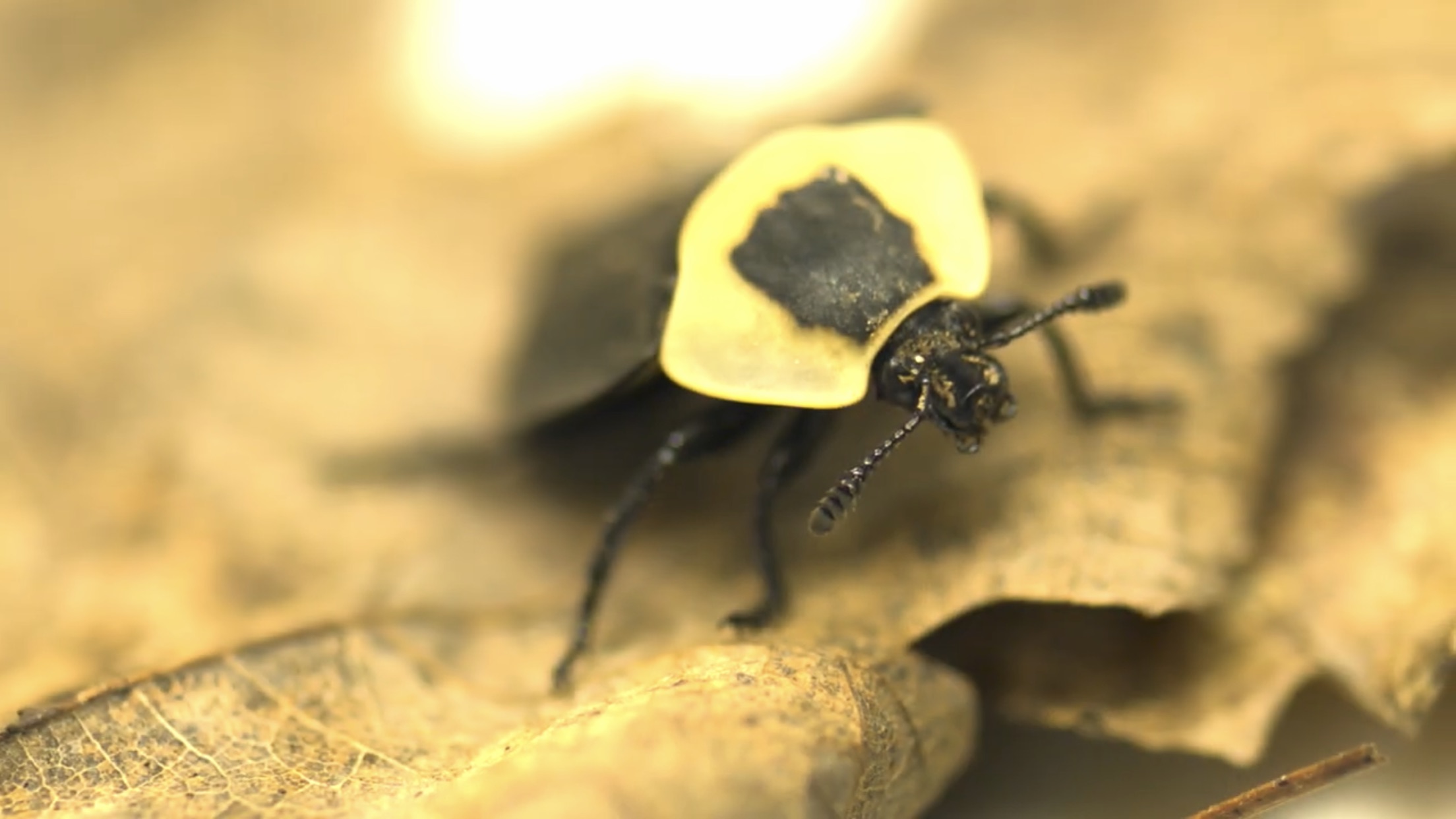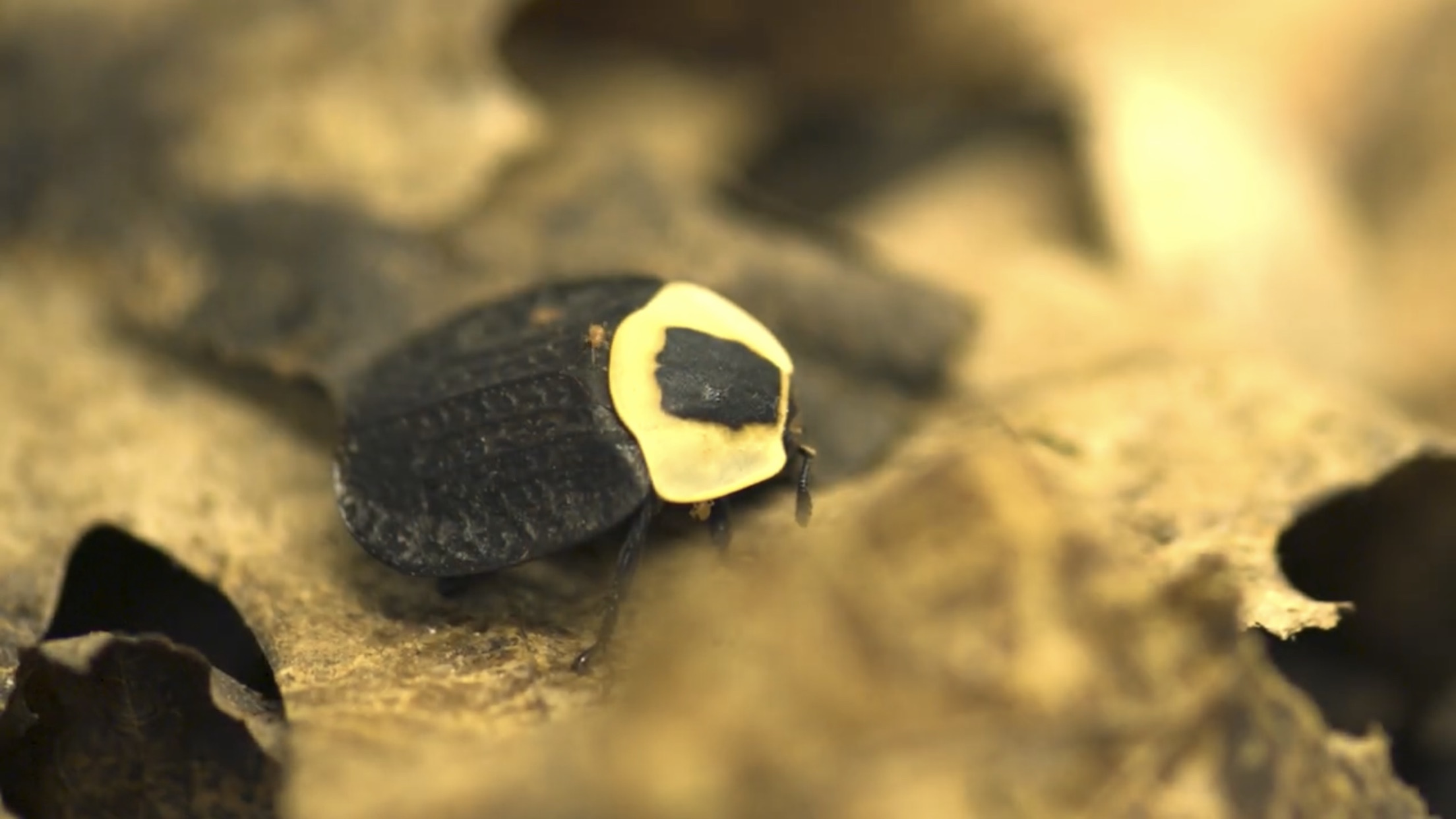
Throughout many of South Carolina’s forest features, one can find the strong presence of insects, most notably the Carrion Beetle.
Carrion beetles are a group of beetles that typically get their nutrients from dead animals, plants, and insects. These creatures are considered to be one of the most popular insects that live in the Palmetto State.
If you are not familiar with carrion beetles, here are 50 unique facts about them!

Carrion beetles commonly will feed on dead organisms found in the environment every day.
As a result, they are known to be decomposers to the ecosystem.
Carrion beetles can live in a variety of different environments such as beehives and caves.
Carrion beetles are usually an average size of half an inch.
The most common feature colors of a carrion beetle are bright orange, yellow, and red markings on a dark background.
With the use of a flat body, it allows the carrion beetle to crawl under dead animals.
Carrion beetles usually provide a strong skillset when working on dead animals.
Carrion beetles are in the family of macroinvertebrates because of their small size.
With this classification, carrion beetles can blend easily in the environment.
Carrion beetles oftentimes have a smelly odor that follows them around.
Because of this smell, it often makes other animals feel uncomfortable.
Carrion beetles can also spray this odor on predators if they feel threatened in any circumstances.
Female carrion beetles can lay around five to ten eggs per cycle.
All carrion beetles have an exoskeleton that is within all of them.
Carrion beetles are most active throughout summer.
In addition, carrion beetles prefer environments where the temperature is moist.
Carrion beetles only live for around four to six months during their lifecycle.
The Carrion Beetle comes from a list of more than one and a half million insect species that have been discovered.
Despite this, it is estimated that it might be only a small fraction of how many there are truly, opening the door for a variety of more carrion beetle types.
Small insect species including variants of the carrion beetle have not only have been found for the first time, but they do not even have a name.

Since variants of the carrion beetles are similar in appearance as well as other smaller insects, it takes an extensive research alongside scientific equipment to distinguish them.
Even though their looks might be deceiving, carrion beetles are highly active in ecosystems across the planet.
Without the presence of carrion beetles, the world would be a drastically different place in terms of its environment.
In South Carolina, carrion beetles play a crucial role in making sure the state’s ecosystems continue to flourish at a prominent level.
Carrion beetles are known to have some of the dirtiest jobs in the animal kingdom.
Nowhere is better demonstrated than in the layer of plant debris on the forest floor known as “leaf litter,” something that carrion beetles face each day.
In this process, carrion beetles recycle the nitrogen in dead plant matter and enrich the soil which aids new growth
In order to do this, small pieces of leaves are broken down, consumed, and then excreted by the carrion beetles.
The leaf litter produced by the carrion beetles in exchange provides the perfect habitat offering shelter and protection for these organisms.
They may seem small and insignificant, but the health of the environment relies greatly on carrion beetles.
Without them, plants would lose the natural source of nutrients they provide.
Carrion beetles are known as decomposers, organisms that break down dead organic substances into simpler matter.
Also known as “burying beetles,” carrion beetles feed and lay their eggs on the bodies of dead or decaying animals.
While unpleasant, it is a necessary process of keeping the balance of nature in check.
When an animal dies, it emits a foul odor that is picked up by flies and other scavengers like the carrion beetle, allowing them to go to work.

Once the carrion beetles arrive, they quickly begin digging underneath the decaying carcass to bury it in the earth.
This process prevents the food from dying out and the carrion beetles prevent competitors from coming into the action.
Most of the eating is done by juvenile carrion beetles while adults have been observed to have a bit here and there.
Adult carrion beetles’ primary focus is to mate, lay their eggs, and thin out the competition.
One of the main competitors of the carrion beetle is the fly.
Though it is impossible to completely eradicate them, the carrion beetle usually has a couple of tricks up its sleeve.
When a beetle arrives at a carcass, the mites hop off and quickly get down to business eating fly eggs and smaller larvae.
In this form of mutualism, the carrion beetle’s offspring have fewer competitors, and the mites get a free ride from meal to meal.
Mutualism is the ecological interaction between two or more species where each species benefits from the other, something that impacts the carrion beetle.
At Clemson University, bug scientists known as entomologists have been researching insects like the carrion beetle since the late 1800s.
Their work typically consists of identifying and analyzing local species as well as keeping track of changes throughout the carrion beetle’s environment.
To get specimens of the carrion beetle, Clemson faculty and students will head to areas such as Clemson’s Experimental Forests and capture species by shifting through leaf litter and setting up traps.
Once collected, they are brought back to the lab and filtered once more to obtain clean samples for studying and looking at the carrion beetle.
For a closer look in specimen, modern DNA sequencing from the carrion beetle is used to defernite cryptic species that look identical but are generally distinct.
One of the final stops for those collected is Clemson’s Arthropod Collection Musuem where over a million and a half species of insects like the carrion beetle are stored and cataloged for future study, putting a pin down on how essential these wild creatures can be.
For more information about carrion beetles, be sure to look at our What’s Wild episode on them, where we take a more digitalized look!
{"preview_thumbnail":"/sites/default/files/styles/video_embed_wysiwyg_preview/public/video_thumbnails/Oajy3Wiu-nY.jpg.webp?itok=I_U4bho8","video_url":"https://youtu.be/Oajy3Wiu-nY","settings":{"responsive":true,"width":"854","height":"480","autoplay":false},"settings_summary":["Embedded Video (Responsive)."]}





